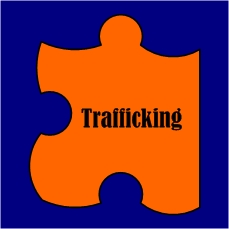Trafficking Tragedies: Europe

“The story of Kira* beggars belief. Kira is a 28-year-old Moldavian woman who has, for seven years, spent most of her time as a sex slave. Her story was exposed in the British media in the last few weeks and is subject to an ongoing inquiry and court case that Kira herself has instituted in Britain.
Kidnapped aged 14, her ‘minders’ put her through hell as she was transported around Europe, sold like cattle and savagely forced into prostitution − an ever increasing downward spiral that saw her, as a ‘hostess’, travelling through a number of countries across the continent among them Romania, Italy, Belgium, Turkey and twice in the UK. Unfortunately, escaping the clutches of her ‘guardians’ brought little comfort.
Expelled from the UK and Italy, her tormentors looked up her family and threatened to kill their daughter, actually imprisoning her and making her dig her own grave. It was only a chance escape in 2004 that made authorities in the UK finally react to her terrible plight. Thankfully, she was eventually granted asylum in 2008. Today she is seeking compensation for the alleged insensitivity that authorities, in supposedly civilized societies, have shown towards her horrible predicament. This is her story.
Kira is only one of the many thousands of what can be termed modern day victims of slavery. Clearly, the illegal trade of human beings or human trafficking is alive and well. Human trafficking is the fastest growing criminal industry, third only to the drugs trade and the illegal selling of arms. Some of the statistics bandied about are simply shocking. The revenue generated from this activity ranges from $10 to $40 billion annually. The United Nations and the Council of Europe have described this trade in human suffering as having reached ‘epidemic’ proportions.’ The same United Nations estimates that around 2.5 million individuals from as a much as 127 countries are being trafficked annually around the world. In their great majority these individuals are women and children.
Make no mistake. There is a clear distinction between people smuggling and human trafficking. In the former, it is usually an arms length transaction where the smuggler helps people cross borders illegally for a pre-set amount of money. Human trafficking is a completely different kettle of fish where individuals are normally duped into trusting these criminals who have specific uses for them. Most individuals, almost entirely women, are conned into believing they are getting jobs or opportunities to further their studies. Economic, political and social inequalities are normally the catalyst for the victim’s unwittingly tragic decision. Within weeks of compliance, the harsh reality that awaits them unfolds and for most there is no turning back.
The case for children is even more harrowing. Children are kidnapped or even sold by their economically desperate parents to be eventually passed on for adoption and child labour purposes. Some are forced into child prostitution. All women and children in these cases are treated abominably and suffer huge physical and emotional suffering at the hands of their ‘guardians’. Do not think that these events are happening only in places like Thailand or Brazil. In Spain, it is estimated that over 260 children have disappeared from Spanish hospitals, mostly for illegal adoption purposes.
Unfortunately, human trafficking remains in the shadows of the media, and due to its complex illegal nature actual figures are largely unknown. In most cases, large-scale criminal organisations tend to take a secondary role and this criminal activity is mostly pursued by small, dedicated, specialised groups. The silence of many victims, cowering with fear and under physical and mental pressure, makes exposing this vile industry that more difficult.
In the main, most victims are from Asia and Eastern Europe, China, India, Thailand, parts of South America, Moldova and Belarus are generally flagged as the likely hotbeds of origin of these modern day chattels. Internationally, there is a form of concerted effort in stemming this increasing criminal activity. An international protocol was adopted in 2000 that has, over the last 10 years, been signed by almost 120 countries. Evidently, more resources are required to effectively combat this crime. Possibly, the present immigration emergency and tight state funds make this a difficult reality in the short term.
This is an international phenomenon that requires the cross border efforts of many countries spanning the globe. Convergence in intelligence will improve investigations and enhance the chances for successful prosecution. By and large, only a small minority of cases are resolved worldwide for the aforementioned reasons. Raising awareness will at least keep the chance of the many hopeless victims alive, hoping for the sake of the victims that this cycle of injustice is finally broken.
*Kira is a fictitious name”
The scourge of modern day slavery
[The Malta Independent Online by Caroline Galea May 2011]
REFORM Puzzle Piece


Recent Comments